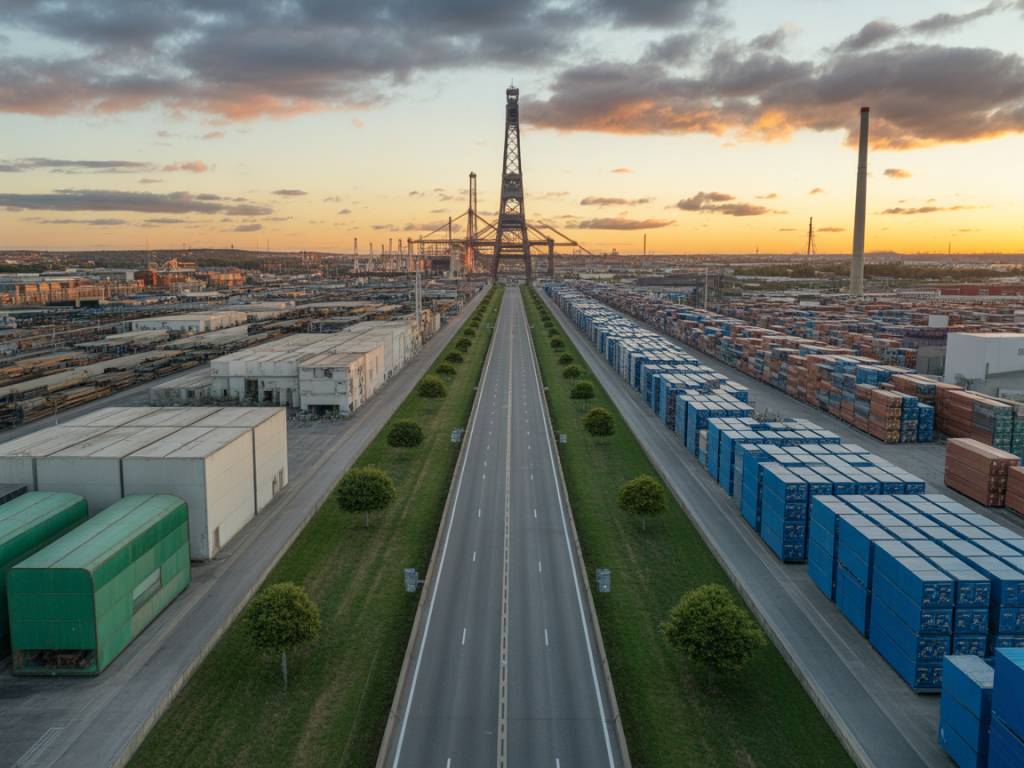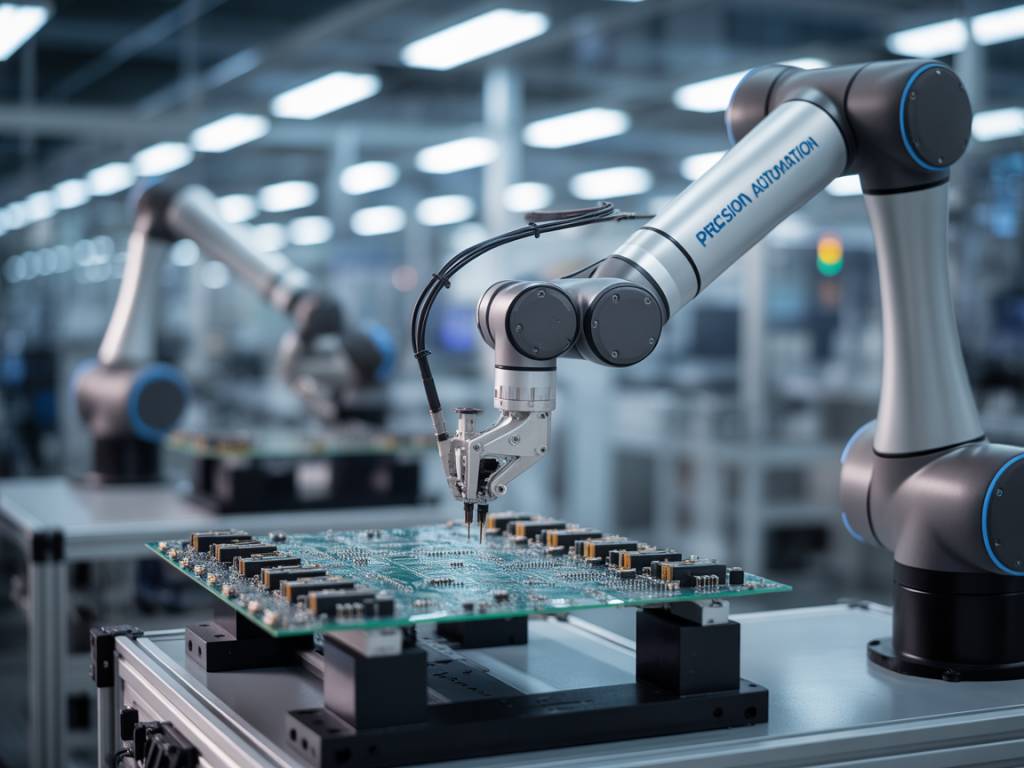Big Data: Driving the Next Industrial Evolution
The manufacturing sector has long relied on efficiency, precision, and scale. Today, a new driver is reshaping how modern factories operate: big data. Data is no longer just a byproduct of production — it has become a strategic asset. From real-time monitoring to predictive maintenance, factories are turning bytes into competitive advantage. But how exactly is big data making an impact on the factory floor? Let’s dive into the numbers, the technologies, and above all, the operational shifts already underway.
From Excel to Edge: The Rise of Data-Centric Operations
For decades, plant managers depended on spreadsheets, isolated databases, and manual logs to manage operations. Fast-forward to 2024, and we’re seeing entire facilities driven by sensors, IoT devices, and edge computing. According to a 2023 report by McKinsey, over 70% of large industrial firms in Europe have begun integrating big data platforms into their operational workflows, aiming to increase efficiency by up to 20%.
Real-time data collection is now embedded at every level — from machine uptime and energy use to operator performance and supply chain flow. The goal? Better, faster decision-making at the operational edge, not weeks after the fact during monthly reviews.
Predictive Maintenance: Downtime’s Worst Enemy
Machine breakdowns are costly. Depending on the sector, unplanned downtime can cost between €5,000 and €15,000 per hour. For industries like automotive or pharmaceuticals, those figures climb even higher.
Big data enables predictive maintenance via AI algorithms that learn from historical usage, performance patterns, and environmental conditions. One notable case is Bosch Rexroth, which implemented data-driven predictive maintenance across several plants, reducing machinery downtime by 25% within the first year.
Rather than waiting for a machine to fail or scheduling maintenance based on fixed intervals, sensors collect crucial parameters — vibration levels, temperatures, cycle times — and alert teams before a failure occurs. Maintenance teams can act just in time, not too early, not too late.
Energy Optimization: From Waste to Value
Energy costs represent up to 20% of operating expenses in some manufacturing sectors. Yet many plants operate without a detailed understanding of energy flow across machines, production lines, or shift schedules.
Big data changes the game. By collecting and analyzing energy data in real time, factories can:
- Identify high-consumption machines and optimize their scheduling
- Integrate renewable energy sources into their mix more efficiently
- Detect equipment anomalies linked to energy overuse
Take the example of Schneider Electric’s smart factory in Le Vaudreuil, France. After installing IoT-enabled energy meters and deploying analytics software, the site achieved a 25% reduction in energy consumption within three years.
Supply Chain Integration: A Single Source of Truth
Factory efficiency no longer stops at the gate. With increasingly globalized and fragile supply chains, manufacturers must align internal operations with external variables: availability of raw materials, supplier reliability, logistics delays, regulatory shifts, and even geopolitical disruptions.
Big data platforms enable manufacturers to ingest and contextualize data from suppliers, transport partners, weather feeds, and market reports. This 360-degree visibility helps planners better anticipate disruptions, reroute orders, or prioritize production runs.
One notable example comes from Siemens, which developed a digital twin for its supply chain. This virtual model integrates live data to simulate different production and sourcing scenarios, helping managers make informed decisions in seconds rather than hours.
Workforce Management: Data-Driven HR on the Shop Floor
While automation often takes the spotlight, human operators remain central to factory performance. Big data tools are now helping companies better manage their workforce through:
- Real-time productivity tracking
- Safety compliance analysis
- Training effectiveness evaluations
For example, a tier-one automotive supplier based in Eastern France implemented wearable sensors across its assembly lines to measure ergonomic strain and fatigue. The analysis revealed specific workstations linked to higher injury rates, triggering a redesign of workflow layouts and personalized rest schedules.
The result? A 12% drop in work-related injuries and a 9% increase in overall line productivity within eighteen months.
Quality Control and Defect Reduction
Quality assurance often relies on post-production sampling and manual inspections. While effective, it’s also reactive and time-consuming. Big data-powered quality management systems use computer vision and machine learning to detect defects in real time during production.
Visual inspection systems in electronics or textile factories, for instance, can now process thousands of items per hour, flagging small anomalies the human eye might miss. More importantly, sensors embedded in the production line collect environmental and process parameters that are later correlated with defect rates, helping engineers prevent issues before they manifest.
Japanese electronics manufacturer Omron reported a 27% improvement in quality control efficiency after deploying a machine learning system trained on production data across its various global sites.
The Digital Twin: Mirror Image, Real-World Impact
Digital twins — real-time digital replicas of physical systems — are one of the most advanced applications of big data in manufacturing. They aggregate real-time data from sensors, ERP systems, production logs, and even customer feedback. The result is a living model that enables simulations, scenario planning, and stress testing without interrupting operations.
In the aerospace sector, for example, Rolls-Royce uses digital twins of its jet engines to simulate maintenance procedures, anticipate component fatigue, and optimize engine performance. In the factory, these same models are applied to simulate production ramp-ups or introduce new materials without disrupting live output.
The ROI? According to Deloitte, digital twin initiatives can generate a 10–15% increase in operational efficiency and a 5–8% reduction in product development cycles.
Challenges: Integrating, Securing, Scaling
While big data offers undeniable benefits, the road to implementation is not without hurdles. Among the most common challenges cited by industry players:
- Data silos: Legacy systems that don’t communicate with new platforms
- Cybersecurity: As factories connect more devices, attack surfaces expand
- Skills shortage: Many plants struggle to recruit analysts or data engineers familiar with industrial operations
- ROI timelines: Data-driven transformations often require months before tangible cost reductions appear
That said, many firms begin with pilot programs. Rather than attempting full digital transformation at once, successful manufacturers pick a pain point — say, increasing OEE (Overall Equipment Effectiveness) on a critical line — and build from there. Data maturity isn’t a sprint; it’s a phased journey.
Future Outlook: Industrial Intelligence at Scale
The direction is clear: smart factories are becoming intelligent ecosystems where machinery, people, and data work in concert. With 5G rollouts accelerating and AI models becoming more accessible, the ability to derive actionable insights from real-time data is no longer a nice-to-have — it’s a necessity.
The good news? Early adopters are already seeing returns. As barriers to entry lower, even mid-sized manufacturers can harness the power of big data to enhance agility, resilience, and innovation.
After all, in the industrial era 4.0, it’s not only the machines that need to work smarter. It’s the thinking behind them.




